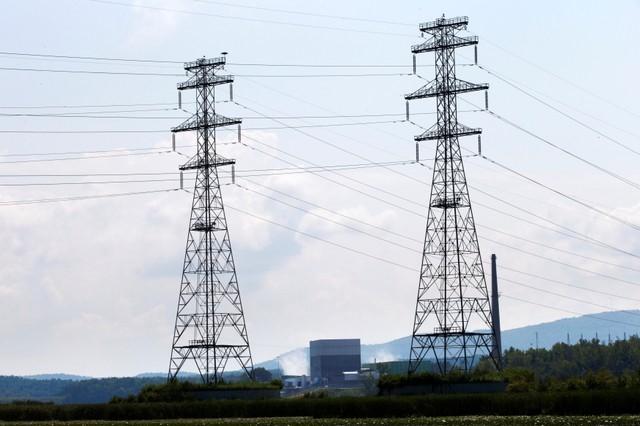
By Steve Holland
WASHINGTON (Reuters) – Former President George H.W. Bush’s full life and decades of public service will be celebrated on Wednesday at a funeral expected to be a remembrance of an era that many Americans recall as a time of less contentious politics.
An unusual bipartisan spirit will be on display at the service at the Washington National Cathedral, starting at 11 a.m. (1600 GMT), with both Republican and Democratic politicians gathering to hail the life of a president who called for a “kinder, gentler” nation.
Bush, the 41st U.S. president, died last week aged 94.

Visitors gather before a State Funeral for former President George H.W. Bush at the National Cathedral in Washington, U.S., December 5, 2018. Andrew Harnik/Pool via REUTERS
“You’ll see a lot of joy,” said Ron Kaufman, who was George H.W. Bush’s White House political director in his unsuccessful re-election campaign in 1992. “It’ll show the way of life that people took for granted in many ways and now kind of long for.”
Political feuds will be set aside in honor of the late president, a World War Two naval aviator who was shot down over the Pacific Ocean, a former head of the CIA and a commander-in-chief who defeated Iraqi forces in the 1991 Gulf War.
President Donald Trump will attend the service, along with his wife Melania Trump, but will not be a speaker.
Trump infuriated the late Bush in the past by attacking his sons, former President George W. Bush and Jeb Bush, one of Trump’s rivals in the 2016 Republican campaign.
“Looking forward to being with the Bush family. This is not a funeral, this is a day of celebration for a great man who has led a long and distinguished life. He will be missed!” Trump tweeted on Wednesday.
The Trumps spent about 20 minutes visiting with the Bush family on Tuesday. A senior White House official said Trump has privately called the late president “a good man and a nice guy” and that he has been pleased with the coordination with the Bush family this week.
Jeb Bush, a former governor of Florida, told the Wall Street Journal’s CEO Council on Tuesday: “The president and first lady have been really gracious.”
Bush has been remembered as a patrician figure who represented a bygone era of civility in American politics, although he came across as out of touch with ordinary Americans as economic troubles bit hard in the early 1990s.

Former President George W. Bush, former first lady Laura Bush, Neil Bush, Sharon Bush, Bobby Koch, Doro Koch, Jeb Bush and Columba Bush, stand just prior to the flag-draped casket of former President George H.W. Bush being carried by a joint services military honor guard from the U.S. Capitol, Wednesday, Dec. 5, 2018, in Washington. Alex Brandon/Pool via REUTERS
EX-PRESIDENTS
All surviving former U.S. presidents will be at the cathedral along with their wives: Barack and Michelle Obama, Bill and Hillary Clinton, and Jimmy and Rosalynn Carter. Bill Clinton defeated George H.W. Bush in 1992, but in the years after leaving office developed a strong friendship with him.
George W. Bush will deliver a eulogy, along with former Canadian Prime Minister Brian Mulroney, retired Wyoming Republican Senator Alan Simpson and presidential biographer and former journalist Jon Meacham.
Attendees will include Britain’s Prince Charles and leaders of Germany, Jordan, Australia and Poland, along with a host of former world leaders, such as former British Prime Minister John Major, who was in office during Bush’s term.
Marlin Fitzwater, who was the late president’s White House press secretary, said the ceremony “will show a quality of gentility and kindness that he was noted for.”
Of Trump’s presence, Fitzwater said: “It’s important for our presidents to pay respect to each other and I’m glad President Trump will be there.”
Bush navigated the United States through the end of the Cold War and was president when the Berlin Wall fell in 1989.
He was dogged by domestic problems, including a sluggish
economy, and faced criticism for not doing enough to stem the tens of thousands of deaths from the AIDS virus ravaging America.
When he ran for re-election in 1992, he was pilloried by Democrats and many Republicans for violating his famous 1988 campaign promise: “Read my lips, no new taxes.” Democrat Bill Clinton coasted to victory.
Bush’s casket will be transported to the cathedral from the Capitol Rotunda, where the late president has lain in state since Monday night. Thousands of people have filed past to pay their respects, some getting a chance to see Sully, a service dog that was Bush’s friendly companion.
(Reporting by Steve Holland; Additional reporting by Richard Cowan; Writing by Steve Holland and Alistair Bell; Editing by Lisa Shumaker and Frances Kerry)















